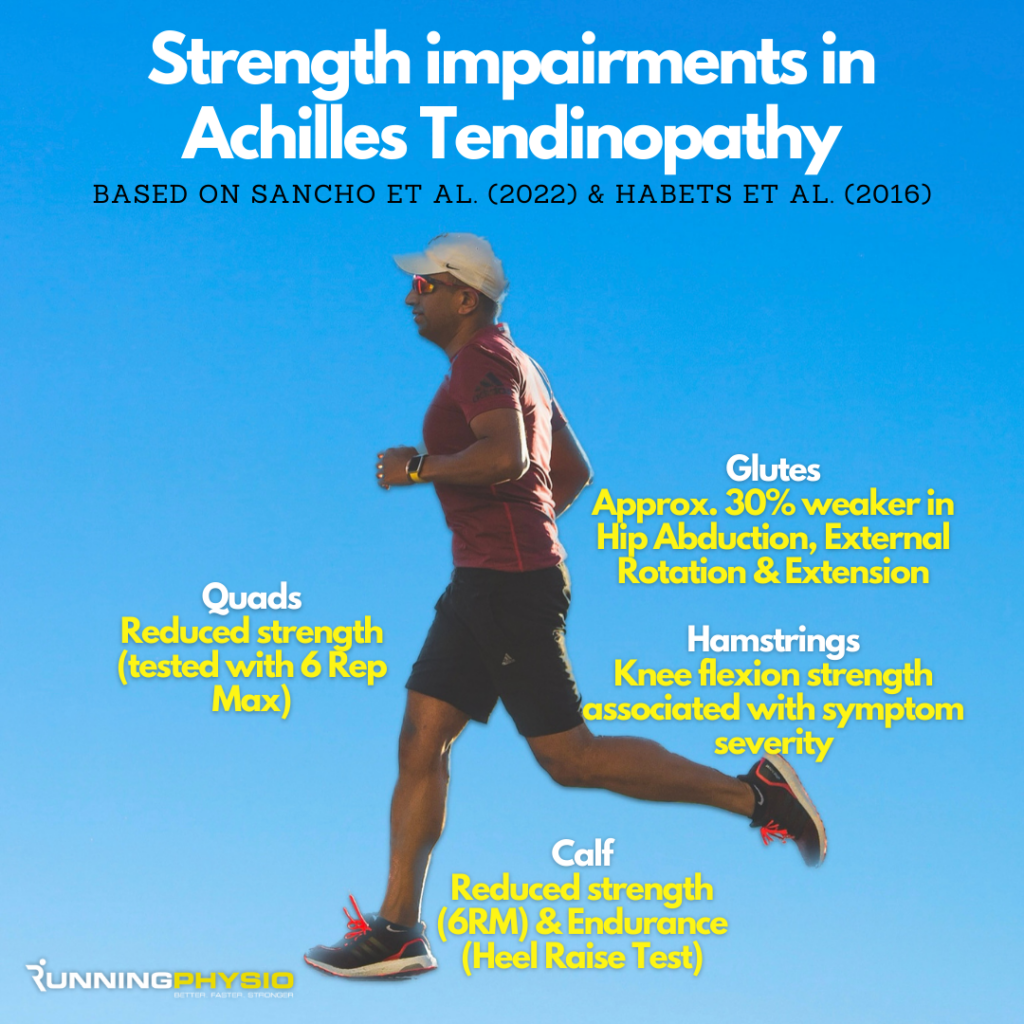Peak forces during running can be surprisingly high! The calf, quads, glutes and hamstrings all manage high peak loads during running which is why they’re arguably the 4 most important muscle groups in runners:

Quads and Glute Med play a key role in load absorption alongside the calf which is also the main contributor to propulsion. Peak load for the hamstrings is at the end of the swing phase when they work eccentrically to slow the leg down prior to foot contact.
You can see why I tend to assess strength in these 4 muscle groups in the majority of injured runners I see in clinic. They’re often a priority above other muscles which typically manage smaller loads at endurance speeds (such as the hip flexors). That said, there is often value is testing other muscle groups if you feel they may be relevant for pain, pathology or performance.
When we look at running injury, for example Achilles tendinopathy, we can see evidence of impairments in these key muscles. The graphic below is based on our free Achilles video series where we guide you through how to test the quads, calf, glutes and hamstrings. We also cover how to reduce pain, develop an effective rehab programme and successfully guide patients back to running. Click here to access this great 3 part series.


